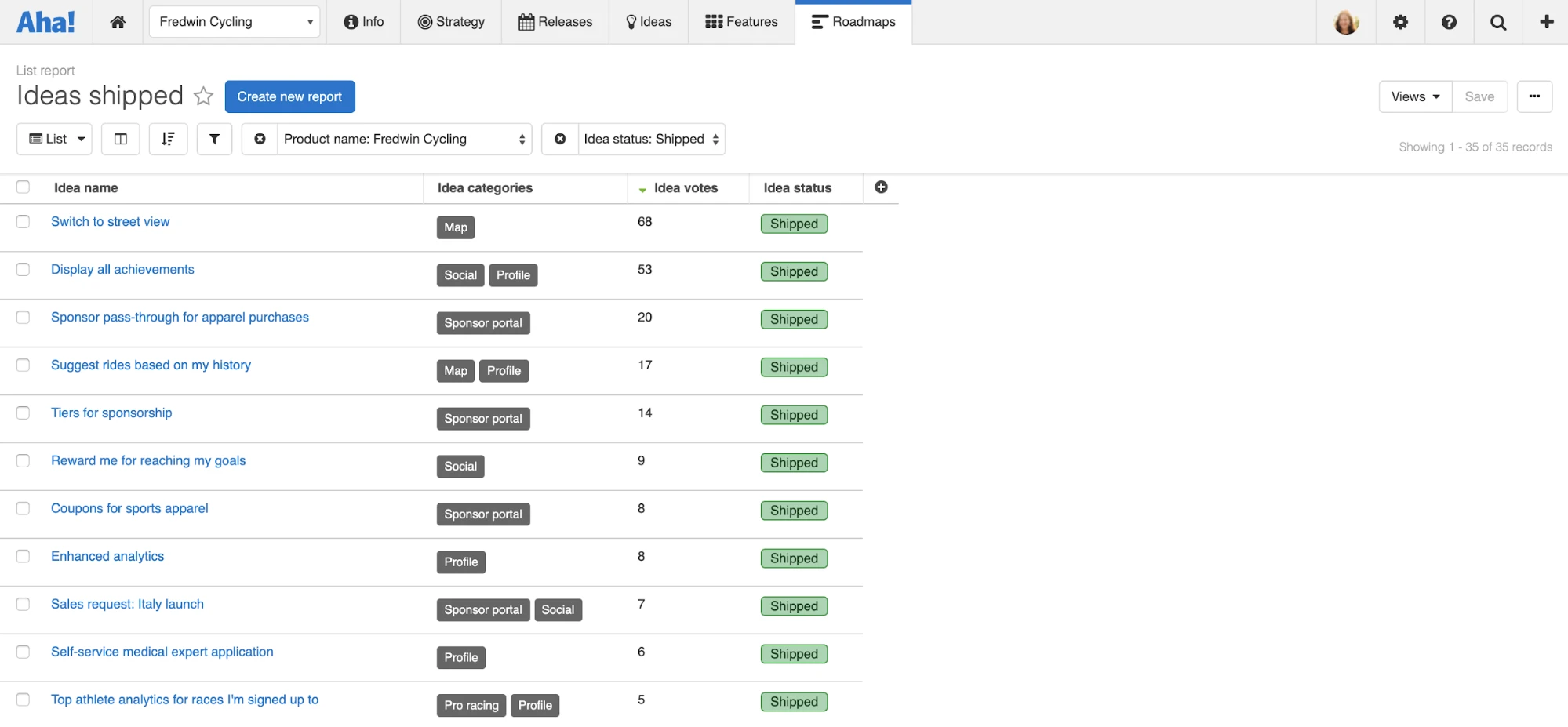
Showcase Your 2019 Product Management Success With These 4 Reports
It creeps up on you and then it is over. The end of the year is in the distance, you achieve a major release, and then everyone looks ahead. What will 2020 bring? But wait. Pausing to consider the work you have done and the team’s accomplishments is a valuable exercise — especially if you are a product manager.
The end of the year is an excellent time to showcase how the product team met goals and delivered new functionality.
Of course, what it is you actually report back on will depend upon the maturity of the product management discipline at your organization. To glean anything meaningful, you need to be working against a clear company and product strategy. But you can start to really show value when you connect that strategy to specific releases and features. You can show how what you delivered actually supported business objectives.
But this is not the reality at all companies. Maybe your organization has a murky strategy and there is only a nascent adoption of product management best practices. This will make it more difficult to evaluate what went well and what did not because you do not have a framework for what success actually looks like. You may need to do this retroactively, reviewing what you have delivered and organizing work into themes that make sense.
Our Customer Success team at Aha! gets questions from product managers at companies at all stages every day. Many of these questions are related to creating reports and presentations. So I asked a few teammates to share their suggestions. We focused on reports you can quickly create from templates in Aha! — yours will be unique to your team and your product. But generally, there are a few major areas to focus on:
Goals achieved When you set out at the beginning of the year, there were probably business and product objectives you knew you needed to support. And there were high-level efforts (or initiatives) that you included in your roadmap in order to meet those goals. It is a good idea to start by showing what those were and how you did.

“Make a high-level report for the leadership team that shows the status of product-level initiatives, how those link up to the corporate goals, and the progress of each goal within the last year.” —
“Include the goal success criteria, target dates, and actual dates in your report to demonstrate how the product team delivered on its objectives.” —
Functionality delivered Does anyone outside of product remember everything that was shipped in the last year? Focusing on functionality reminds everyone of the value you delivered. You can also indicate any new go-to-market releases that were added to the plan over the course of the year — this shows how you responded to changes.
Another way to represent the functionality you have delivered is to show the exact count of the features shipped. You can even break this down further by segmenting out feature types if you want to provide a more detailed view of everything the team has accomplished.

“Reporting on the number of go-to-market releases and features delivered at the end of the year can be very powerful. You are showing what the product and engineering teams produced and how end users benefitted from those efforts.” — Erin Ward
Ideas implemented Ideas are an essential component of innovation. Gathering ideas is also critical to delivering what users need. You want to highlight how the product team listened to feedback, prioritized it against the larger goals, and executed in a substantive (and efficient) way. If you are not yet reviewing or promoting ideas regularly, or have not yet opened up your ideas portal to external users, do not fret. You can still report on the themes of the ideas rather than the specific features that resulted from an idea.

“A list of shipped ideas sorted by vote count is a good way to show all the popular, impactful work that you delivered. You can also include the specific goals and initiatives the ideas roll up to. This demonstrates the relationship between the ideas you delivered and the product strategy.” —
Looking ahead After looking back, it is a good time to think ahead. How will this year’s learnings impact next year’s plans? What projects did you abandon or push out? What do you want to tackle next? Think about how you can use your year-end reports to shape a go-forward product strategy that will support overall business growth.

“Put together your proposed goals and initiatives for the first half of next year. You can include success metrics linked to the goals and highlight any work that is being carried over from the current year.” —
Tracking and showing all that you have accomplished is vital to your success as a product manager.
As I wrote earlier, these are all example reports in Aha! that you can customize into year-end reports. Since your data is already stored in the software, views for reports and presentations update automatically — making your job much smoother. But even if you are not using a purpose-built tool, you can likely find a way to replicate these in a more manual way.
How you make your reports is not as important as what you convey. Creating the right reports allows you to bring your contributions front and center and remind everyone of the team’s impressive work year-round.
How do you show what you have accomplished at the end of the year?
Build products like you always wanted. See for yourself — start a free 30-day trial.




